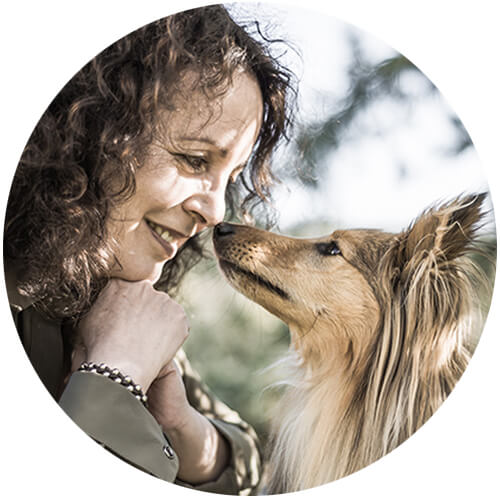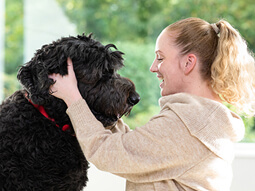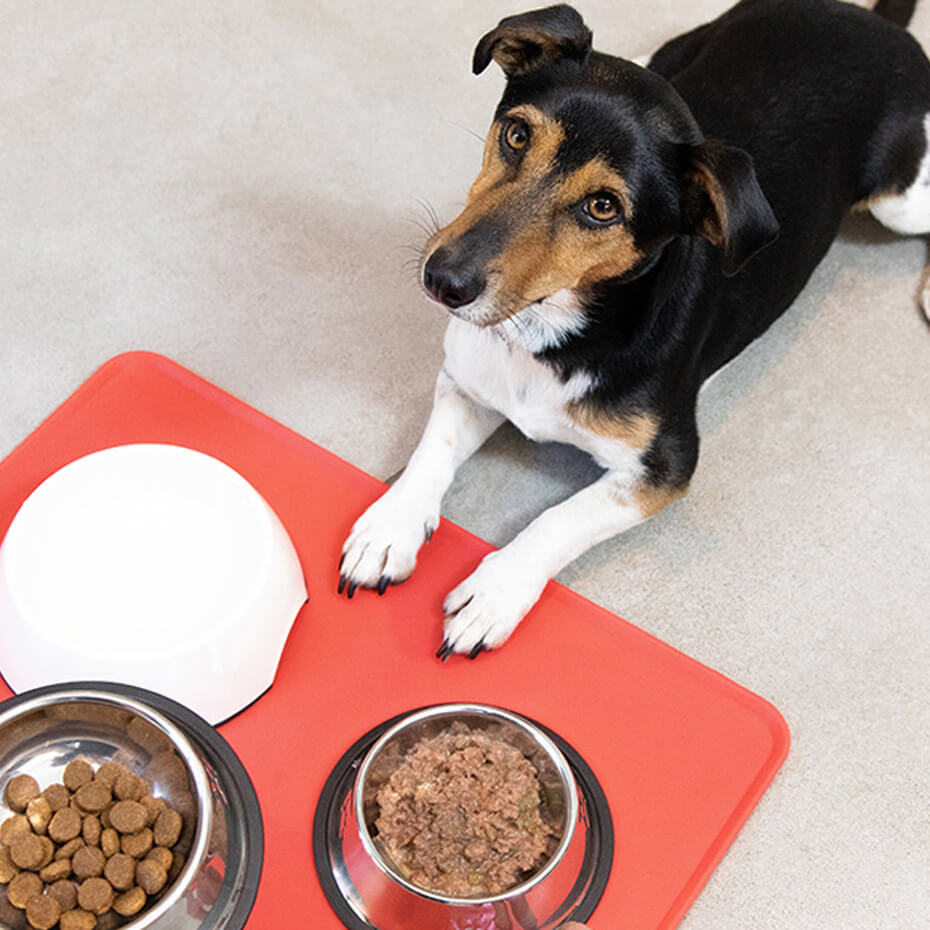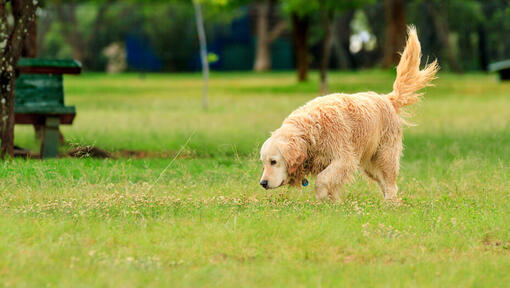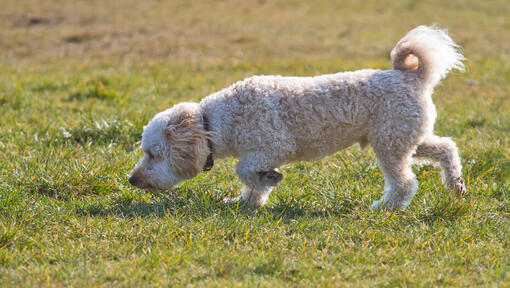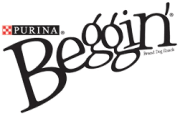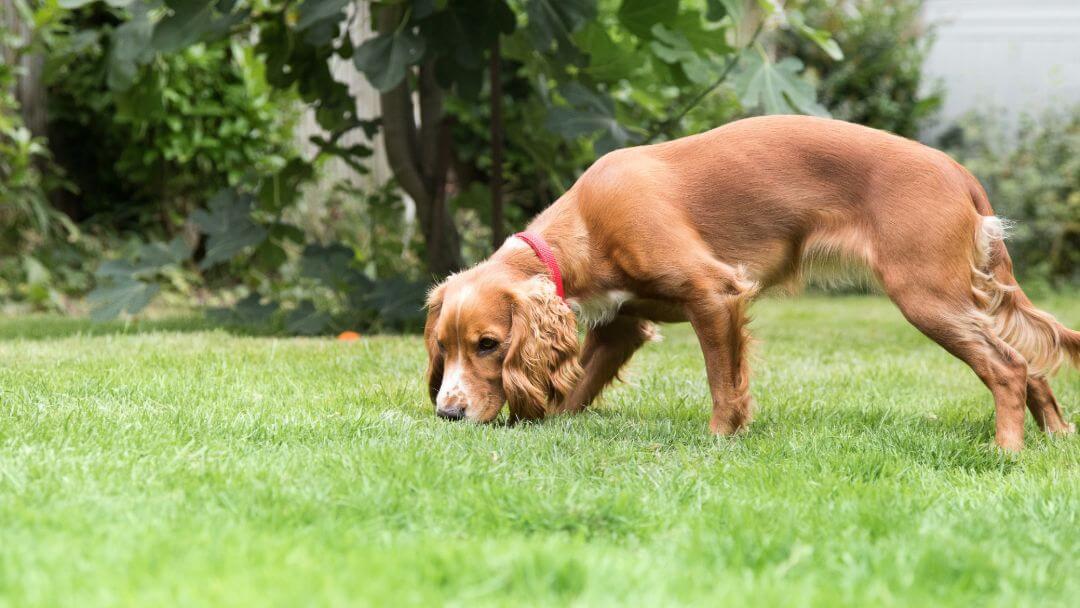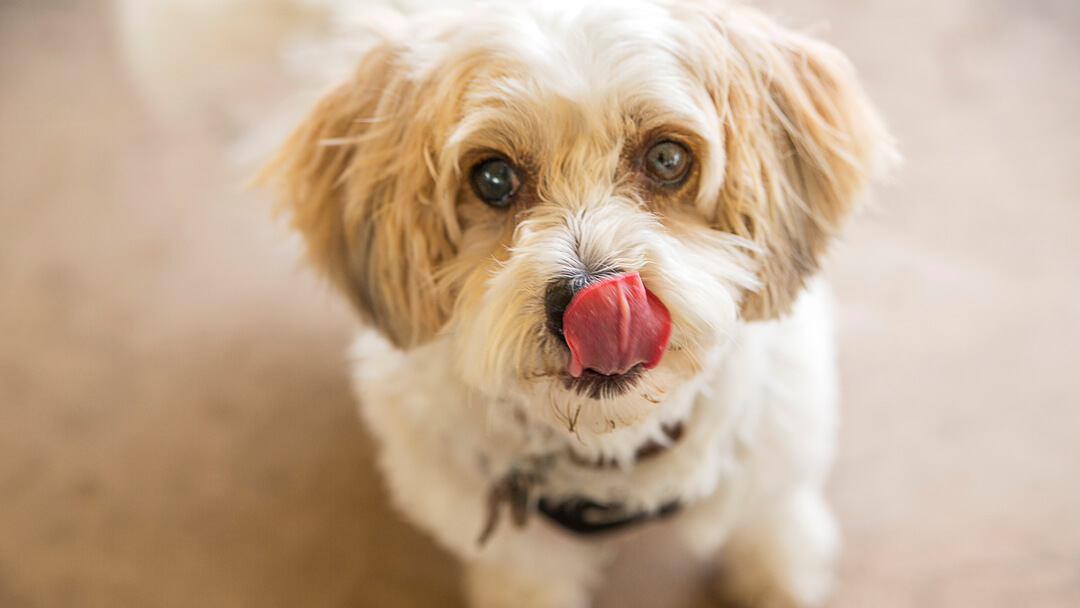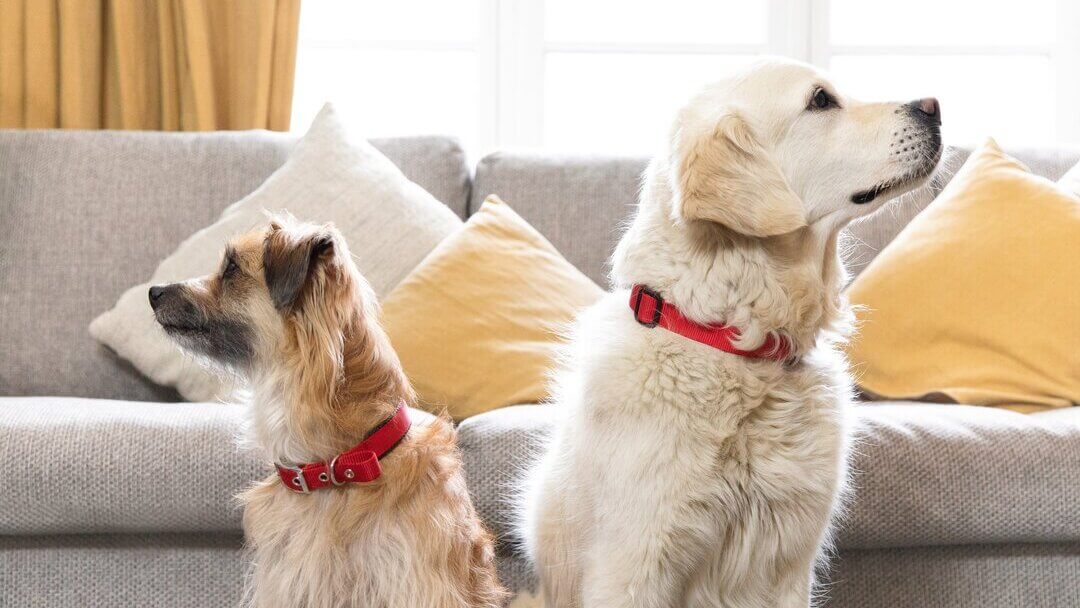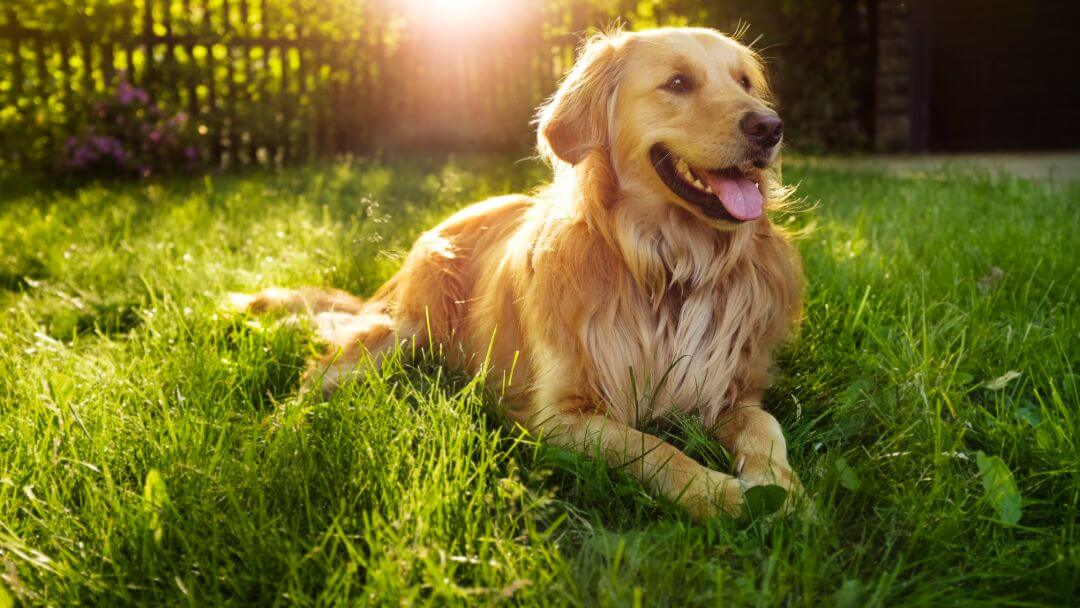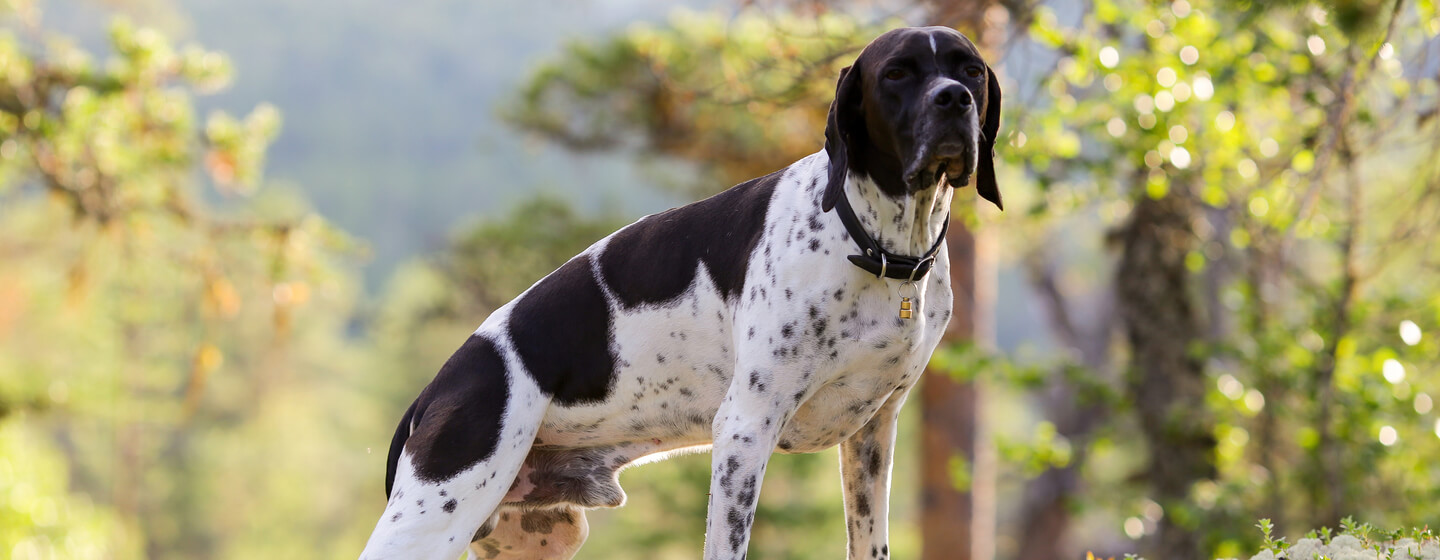
If you’re a dog owner you’re probably familiar with the constant stopping so they can sniff and you’ll likely respond to this by nudging them along – but did you know that sniffing is really important for them? Your dog’s sense of smell is pretty much a super power and their daily sniff routine can help them identify what’s happening in their environment as well as lower their stress levels.
Getting out for a walk is one of life’s joys and it gives us a chance to experience all the sights and sounds of the great outdoors - whether on our regular walks or exploring new places. As we soak up these sensory experiences, we often forget that our dogs see the world very differently to us - and while we are looking at the sights, our dog is discovering far more about the area by its smells.
So often owners get irritated that while they want to stride off across the countryside or have an active walk around the park to make sure their dog gets their daily exercise, their dog pretty much ignores them while he puts his nose down and ‘just’ sniffs.
It’s easy to drag them away thinking they are wasting precious exercise time but that’s purely because we do not have anything even close to a dogs sense of smell, and we don’t understand just how fabulous our dog’s nose is - or that this incredible ability means that unlike us, they see the world in smell-o-vision.
While they are sniffing, they are finding out about the area, who lives there, who has passed by recently, and even what kind of mood they are in. All the time they are sniffing, they are processing information about the environment and who and what is in it.
The power of a dog’s sense of smell
It’s easy to see why we don’t understand this. When it comes to sniffing, humans are pretty useless in comparison. Depending on the breed or type a dog’s sense of smell is around 10,000 - 100,000 times better than ours.
They possess up to 300 million olfactory receptors in their noses compared to about six million in ours and the part of their brains that analyses and processes scents is (proportionally) 40 times greater than ours.
While these numbers mean little to us - as we are visual and so we think and process what we see rather than being scent-aware - if you made an analogy to sight, what we can see at around a third of a mile a dog could see more than 3,000 miles away. Now are you a bit more impressed with your dog’s sense of smell?
Dogs can detect cancer cells, explosives, drugs, and track and find lost people or animals - all by using the power of their noses and the part of their brain that analyses and processes those scents.
Why do dogs spend so much time sniffing?
It’s very easy to disregard what we don’t understand but part of living with a dog is to recognise that a dog’s sense of smell is important to them in a variety of ways. First of all, it’s enjoyable. In the same way that we look around us and take pleasure in that, our dogs sniff and take equal joy in that. Secondly it is a way to find out about the environment and what (or who) it might contain - and if it is safe. And they are picking up information left by other dogs (checking their wee-mails!) - and they are processing all this ever-changing information about the area and its inhabitants while we think they are just wasting time sniffing.
Sniffing has so many benefits for your dog
As owners we need to give our dogs time to sniff. Most of us know that five minutes spent training tires our dog as much as an hour’s physical exercise but we don’t always recognise that five minutes spent sniffing does the same. It’s not just their noses that are working, it’s a large part of their brains too. For active dogs, or for dogs who start their walks totally uncontrollable and either pulling on the lead in their excitement, or else whizzing around all over the place, time spent sniffing can take the edge off their unfocussed energy.
For worried reactive dogs, sniffing can help them feel more secure - as they have spent time working out what is out there and whether it needs to be worried about or whether, far more likely, it is safe.
Perhaps more importantly, for all dogs a chance to sniff fulfils a major part of their sensory needs - as much as physical and mental exercise does and as much as play does. Sniffing makes them happy and gives them an outlet for their hard-wired natural behaviours. So often we ignore this vital part of our dogs’ needs because we just don’t understand it.
How to become ‘Nose Aware’ on your walks:
- Use a long training lead and a harness when you take your dog out and let them spend the first full 5 minutes (at least!) of their walk sniffing.
- Don’t look on this as a waste of time - it is entirely the opposite… this is their walk and you are fulfilling their need. This 5-minute sniff-fest can be as stimulating and enriching for your dog as the whole of the rest of their walk.
- Every time you visit a new place, let your dog spend some quality time sniffing. They are finding out more about the area than you will ever hope to know.
- Even if you do the same regular walk, the scents will always be interesting to your dog no matter how many times they have been there before - as the information is always changing so the opportunity to sniff is as important the 100th time as it was the first! Weather changes scents and makes them either easier or harder to detect and process, as do things like freshly mown grass (if you can smell it, imagine how overpowering it is for your dog!) so for your dog’s nose, every day brings a new sniffing challenge even on the most familiar of walks.
- You will get to know the top sniffing spots on your regular walks. They are very probably where other dogs regularly urine mark and you should let your dog spend time sniffing these. You may think it's a bit disgusting but by checking the wee-mails, your dog is finding out about what dogs are in the area, if they know them, when they passed by, their age, sex, size, health, stress level and very probably their mood. All of this is vital information - and actually… can you imagine how useful it would be if we could do that?!
- If your dog stops to sniff, don’t drag them away. That is as annoying as someone pulling you away when you are trying to look at something interesting or important. Give them time to sniff before encouraging them to move on again.
- Take time each week to go out purely on a scent walk. Go to a new park or outdoor space and with your dog on a harness and lead, just let them spend the whole walk sniffing. Follow them wherever the scent leads. Watch your dog as they are doing this (don’t just stare at your phone!) and try to understand better how important scent is to them and consider what they may be discovering about the world.
- If you have a very scent-aware dog (certain breeds and types such as scent hounds prioritise scents higher and have better olfactory abilities), you can hide their favourite toy or a treat while you are out on a walk for them to sniff out. It helps if you have someone who can hold your dog while you hide the toy (so they can’t see where you put it, and also so you are laying a clear scent trail for them to follow).
- Be amazed by your dog’s nose. It really is something very special indeed.
